- Home
- Laurie R. King
The Mary Russell Companion Page 2
The Mary Russell Companion Read online
Page 2
Morris “Bullnose” Oxford, 1913
A Protest: Russell and the Mary Sues
Since the Memoirs first began to appear, with The Beekeeper’s Apprentice in 1994, the person of Mary Russell has attracted controversy. Many devout Sherlockians raised their (generally) manly voices in protest, at the thought of their honored detective having a life past August, 1914—moreover, a life that not only included a woman, but one who was not The Woman, Irene Adler.
More recently, another form of outrage has been raised, under the accusation of “Mary Sue!” A Mary Sue, for those unfamiliar with the term, denotes a writer whose personal fantasies, generally of the romantic variety, blatantly override the good sense of a storyteller. This stand-in character is invariably hugely gifted, generally wealthy, and so impressively clever as to leave all the established characters either gaping in her wake or succumbing to her charms.
The question of Russell’s “Mary Sue”-ness stands apart from one’s acceptance or rejection of her actual, physical reality. If she is real, then one must take at least the major part of her memoirs as being accurate. If she is a work of fiction, then being (as Laurie King has said in interviews) designed around the existing template of Sherlock Holmes, her omni-competence is inevitable: if Holmes himself is composed of lighting-fast wits, physical competence, honed senses, and arcane knowledge, then so must Mary Russell be. In either case, the lady is no Mary Sue.
Where’d she go?
Maps of the Russell travels
The Beekeeper’s Apprentice
Britain: Sussex, London, Bristol, Cardiff, Wales, Oxford
Palestine (Israel): Jerusalem, Jaffa, Haifa, Jericho, Sea of Galilee, Plains of Esdraelon, Acre
Monstrous Regiment of Women
England: Sussex, Portsmouth, Essex, London
A Letter of Mary
England: Sussex, London, Oxford, Cambridge
The Moor
England: Oxford, Devon, Dartmoor, Plymouth
O Jerusalem
Palestine (Israel): Javneh, Acra, the Sinai, Beersheva, Jerusalem, Dead Sea
Justice Hall
England: Sussex, Arley Holt (Berkshire), London, Dorking
France: Paris, Lyons
US: New York
Canada (Ontario): Toronto, Webster
The Game
England: London, Sussex, Kent, Dover
France: Calais, Paris, Marseilles
Egypt: Suez Canal
Yemen: Aden
India: Bombay, Delhi, Simla, Khalka, Khanpur
Locked Rooms
Japan: Tokyo (mentioned only)
Hawaii
California: San Francisco, Los Angeles
The Language of Bees
Britain: Portsmouth, Sussex, London, York, Edinburgh, Inverness, Orkneys
The God of the Hive
Britain: Orkneys, Lakes District, London, Edinburgh
Pirate King
Britain: Sussex, London
Portugal: Lisbon, Cintra
Morocco: Salé and Rabat
Garment of Shadows
Morocco: Rabat, Fez, Erfoud, the Rif mountains
A Woman of the Twenties:
Mary Russell, Feminist?
The Twentieth century was a whirlwind of women’s activities. Matters were well under way long before the Great War blew up the well-established structures of the Victorian and Edwardian eras: the Suffragette movement (as opposed to the less assertive Suffragists) got under way in 1903, two years after the death of Queen Victoria. The militant wing of women’s rights, under the leadership of the three Pankhursts, mother and daughters, advocated any act short of taking a life—including giving one’s life for the cause. Hunger strikes, willing arrests, suicide under the hooves of the King’s horse—society in general did not approve, but it had to admit that the women were serious.
Suffragette Emily Davison’s suicide(?) at the Epsom Derby
Then came War. The Suffragettes shelved their militant actions for the duration and set about proving themselves in other ways. By the time Armistice was declared, Parliament could no longer deny the right to vote: if women could be trusted to run public transportation, farm the land, and police the streets, surely they could be trusted with the Vote.
The idea of the “New Woman” actually got its start in the nineteenth century, a reference to the independent, educated, and assertive women one found among Society, and especially living the expatriate life in Europe. (It should be noted that in the literature dealing with the New Woman—stories by Henry James being foremost—things rarely end happily for the woman in question.)
The New Woman was a member of the privileged classes—even for men of the times, higher education was rare, and only the daughters of the rich could set up their salon in Paris or Vienna without having a willing husband in tow. However, by the Twentieth century, the dissatisfaction with one’s lot was beginning to extend to the non-privileged classes. The women’s health and birth control clinics of Marie Stopes in the UK and Margaret Sanger in the US reached the lives of the poor (although it must be noted that both women seemed less interested in merely helping than they were in eliminating the “unfit”—i.e., the poor). Early suffrage proponents were as determined to achieve divorce and inheritance reform as they were the actual vote: most women of the time had little consideration of any inheritance, and in any case, not until 1928 were women put on the same footing as men when it came to the Vote.
Marie Stopes
Privilege was the key.
Privilege has always been key in the rights women could claim for themselves. Mary Kingsley celebrated her freedom from caring for aged parents by heading off to West Africa to finish the research on a book her father had been working on. She blithely plunged into jungles, across the rivers, and up mountains (wearing Victorian bombazine and bustles—which, when she fell onto the stakes in a tiger pit, saved her life: “The blessings of a good thick skirt.”), coming home to celebrity. But Kingsley was not interested in feminism, and did not believe women should have the vote while large numbers of men did not.
Mary Kingsley
Gertrude Bell similarly fell in love with life in the wild places, in her case the desert of the Middle East. She became the eyes of British Intelligence, advisor to nations, and was central to the division of Mesopotamia into its modern countries. She also, ironically, was a proponent of the Women’s Anti-Suffrage League—rather as Phyllis Schlafly later made a career out of being against (among other things) career women.
Gertrude Bell
Women like Bell and Kingsley regard themselves as outside the question of sex. And they are so regarded by others: when Bell blithely moved across the face of the desert, she simply assumed that any sheikh, governor, or military general would be pleased to speak with her on equal terms. When Kingsley hired porters and guides to take her into Africa, the men didn’t shake their heads and refuse to take this white woman anywhere. (Although they may have shaken their heads—and admittedly, they may not have recognized this bombazined and be-hatted creature as a female, per se.)
Q: When is a woman not a woman? A: When she is a force of nature.
Mary Russell is both like these women, and different from them. Certainly when we first meet her, she demonstrates more of the wealthy elite’s tendency to blind self-confidence then she does the chronic uncertainty of the usual fifteen year-old girl. When Russell’s editor, Laurie King, speaks of the Memoirs as the coming-of-age story of an extraordinary young mind, this is what she means, not merely the apprenticeship of a clever woman detective.
How does a person go from the shallowness of I am me to an attitude of, I am me, a woman—then beyond that towards, I am me, a woman of privilege?
We can only speculate what might have become of Miss Russell had her parents not died. Would she, too, have gone lightheartedly off into a world where a rich woman and her housemaid have no more in common than the roof under which they both lived?
But her family did die, leaving
her to stand alone, questioning the rightness of the universe and the permanence of life. This doubting attitude is further emphasized when she is apprenticed to a man who questions everything he sees. Russell is driven towards self-awareness in ways Gertrude Bell never faced—or, faced only when she was long beyond the flexibility of youth.
So, if feminism means an awareness that privilege is given, not deserved; that fairness is an ideal, not a state; that when a man and a woman do the same job, they should receive the same pay, then yes: Mary Russell is a feminist.
On Matters Unspoken
One element of the Russell & Holmes memoirs that excites considerable interest among her readers is the question of the marital relations between the principals. Generally speaking, Russell is decorous when it comes to personal revelation, although she does admit (A Letter of Mary) that Holmes is “as energetic and scrupulously attentive to detail in the physical aspects of marriage as ever he was in an investigation or laboratory experiment”, then adds that he was “not otherwise a man demonstrative of his affections.” In Locked Rooms, Russell says that not only was she “well matched mentally” to Holmes, she was also “well suited physically, to a man who interested my intellect, challenged my spirit and roused my passions.”
He brushes her hair. He sits beside her and fiddles with her fingers. And that is as steamy as the Memoirs get.
However, we must remember that the Memoirs speak in the voice of a proud, private woman in her eighties, a person with a very clear image of just how eager people might be in seizing the more ribald details of her husband’s life. And like a film star who honestly wishes to retain a degree of un-public life, she watches her every word and revelation.
This applies to other aspects of her life as well. No matter how long she wanders in the desert or among the Welsh hills, whether dressed as a fashionable heiress or a twin brother, on pirate ships or turbulent aeroplane rides, she rarely breathes a word about any necessary bodily functions that might take place along the way.
Miss Russell is a most private person. She makes clear that she would appreciate it if her readers respect her privacy, and that of her famous husband.
And if that frustrates her readers, she probably would rather not know.
From “The Man with the Twisted Lip”
Russell’s Homes
Several of Mary Russell’s homes appear in the Memoirs, in England and in the United States. We have yet to hear of any family house in London—or indeed many particulars concerning her mother’s family at all, other than their longstanding alienation. The earliest of her homes mentioned in the stories is her father’s home in Boston, about which we know little apart from its existence, and his San Francisco house where young Mary spent much of her childhood, located on Pacific Heights near Lafayette Park (Locked Rooms).
Primarily, in the Memoirs, her homes are three: the Sussex farm belonging to her mother, where her family spent idyllic summers, and to which fifteen year-old Mary demands to be sent after the accident that orphaned her; the “villa” where Sherlock Holmes lived after retiring from London; and Oxford, the home of Russell’s heart (and, eventually, her person. This last home, which she seems to have bought in 1923 or 1924, makes no appearance in the first dozen novels, although it does enter into Dreaming Spies, and in “My Story” and “A Case in Correspondence” in this Companion.)
A caveat
There is, unsurprisingly, some difficulty in precise identification of all three sites. Mary Russell is a woman who values her privacy, and clearly does not wish to make it easy for the outside world to locate her. Town names given in the Memoirs should be regarded as suspect, and actual distances even more so. With this caveat in mind, let us consider Russell’s homes in order.
(Please note: other remarks are attached to the annotated chapters of The Beekeeper’s Apprentice, found in Book Two, below.)
Sussex
Sussex Downs, vicinity of Beachy Head
Russell’s farm site
We first hear of Russell’s inherited home in the second paragraph of The Beekeeper’s Apprentice:
I had set out at dawn from the silent farmhouse, [and] chosen a different direction from my usual—in this case southeasterly, towards the sea.
Unfortunately, she has a book. With her nose firmly planted therein, she says:
[I] spent the intervening hours wrestling with Latin verbs, climbing unconsciously over stone walls, and unthinkingly circling hedge rows, and would probably not have noticed the sea until I stepped off one of the chalk cliffs into it.
Therefore, her original intentions as to direction is no clue. As to the meeting place itself:
I thought for a minute, got up, and walked to the top of the hill, scattering ewes and lambs, and when I looked down at a village and river I knew instantly where I was. My house was less than two miles from here.
Since it is probable that, even with the engrossing Virgil in hand, she might have noticed if she’d actually forded the Cuckmere River, this suggests that her farm is to the east of that meandering stream. Between the Cuckmere and the seaside resort town of Eastbourne lies a great deal of open land, the South Downs. (Mutton grazed on Sussex fields—particularly fields where the native thymum serpyllum grows—is still regarded as a delicacy.) To the north of this open chalk-based landscape stands the Weald, vestige of the ancient forest. Roughly along the line between Weald and Downs, a road connects Eastbourne with the larger city of Lewes (with London beyond).
The Eastbourne seafront, with Pier and shingle beach
In the early Twentieth century, the farther one got from this road, the slower progress could be, particularly in wet weather. Even the more adventurous of London holiday-makers might tend towards those villages where they could count on getting in and out with ease: thus, near the roads and railways. The Lewes road, marked by the Ordnance Survey as “good and fit for fast traffic”, lies one mile from the village of Folkington, or two and a half from Jevington. The Lewes road also passes through Polegate, a town with a station on the Southern Railway that would be similarly convenient for regular London travel.
Russell’s home is, unusually enough for a holiday retreat belonging to a family of city-dwellers, a working farm. Reference is made to the farm manager Patrick, to Patrick’s draft horses and their stables, to chopping wood, and the like. Again, one would have found farmland on the outskirts of either Folkington or Jevington.
Holmes’ villa site
Describing his home in “The Lion’s Mane”, Holmes (yes, Holmes himself) writes, “My villa is situated upon the southern slope of the Downs, commanding a great view of the Channel.” The preface to “His Last Bow” makes reference to Holmes’ “small farm upon the Downs, five miles from Eastbourne”, while in the story itself, Watson says to his friend that he has heard Holmes is “living the life of a hermit among your bees and your books in a small farm upon the South Downs."
Leaving aside Dr. Watson’s well-documented habit of eliding details for the sake of drama, there is a question of what precisely is meant by “five miles”? Is this a direct measurement on the map, or the length of the windy and indirect road out of Eastbourne? And does “Eastbourne” refer to the town hall, or the railway station, or the furthest edges of suburban development—which even in 1915 was creeping up the escarpment towards the Downs beyond?
Further, more problems crop up in a close analysis of the Memoir text. For example, Russell (in Beekeeper) tells Holmes, “my home is two miles north of where we met.” From that spot, she says:
It was a lovely walk, that, nearly four miles over the downs.
It would be helpful if she stated that they made straight from the meeting spot to Holmes’ house, but no, she does not. And since Holmes is out that day to search for wild (or perhaps feral) honeybees, one suspects that “four miles” on foot might have been a single mile on the back of a crow. Indeed, since the bees he marks with blue paint then fly off a north-easterly direction, the meeting place could even be in Holm
es’ back yard.
The actual meeting place was “uncluttered hillside” or open Downland, but bare pastureland would be an unusual place for apis mellifera to choose as a new home. Honeybees prefer shelter: a dead tree, a derelict building, or a loosely laid stone wall—but also require open ground or orchards where flowers grow. A more likely site for the meeting would be along the hilly ground between Jevington and Litlington, where several hills would permit a view of the Cuckmere and “a village”, perhaps Alfriston.
Again, this would place Russell’s farm is the area of Folkington or Wilmington, either of which would be an easy cycle-ride to the Holmes villa.
A second caveat
There remains one other thought worthy of consideration: the brother of Sherlock Holmes is a man with such power he “occasionally is the British government.” As such, Mycroft Holmes would be quite able to ensure that one Downland estate is removed from view, when it comes to governmental Ordnance Survey maps.
The Villa
The Conan Doyle stories mention the Sussex “villa” to which Sherlock Holmes retired in the early years of the Twentieth century. This word later came to mean (particularly in America) any kind of grand house located outside a city—and in modern Britain can refer to a semi-detached with a tiny lawn—but when Holmes uses the word, he is evoking (ironically or otherwise) the original Roman sense of a rich person’s working country estate.
Russell calls his house a “cottage”. In “Lion’s Mane”, Holmes calls it “my little Sussex home”. Thus, we may assume that the original building was smaller, suited to the needs of a solitary bachelor and his elderly housekeeper. However, even by the time of Russell’s first visit in 1915, changes had been made to the fabric of the house, and after she arrived, with her books and her possessions, it would appear that either additions were made, or that some of the adjoining farm out-buildings were converted and tied to the main house.

 O Jerusalem
O Jerusalem Beekeeping for Beginners
Beekeeping for Beginners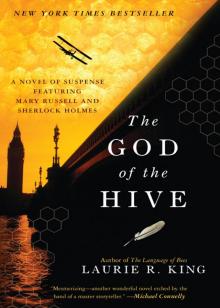 The God of the Hive
The God of the Hive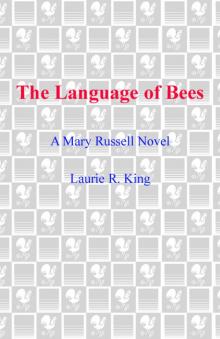 The Language of Bees
The Language of Bees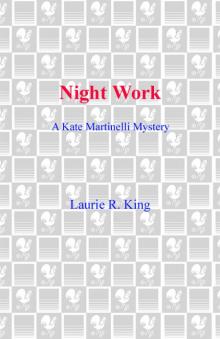 Night Work
Night Work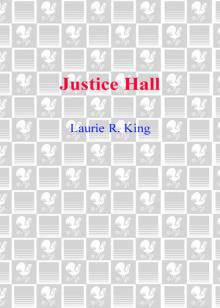 Justice Hall
Justice Hall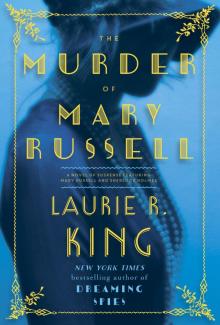 The Murder of Mary Russell
The Murder of Mary Russell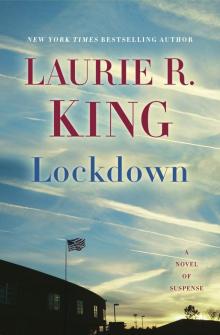 Lockdown
Lockdown To Play the Fool
To Play the Fool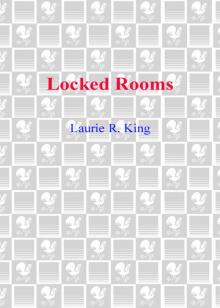 Locked Rooms
Locked Rooms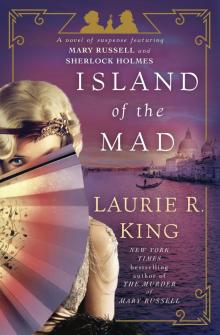 Island of the Mad
Island of the Mad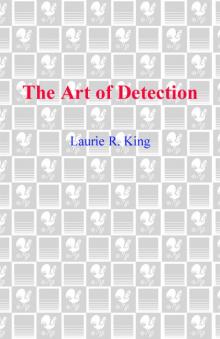 The Art of Detection
The Art of Detection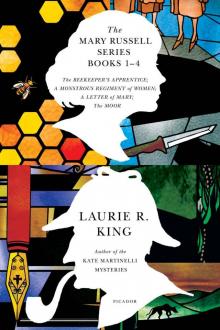 The Mary Russell Series Books 1-4
The Mary Russell Series Books 1-4 The Beekeeper's Apprentice
The Beekeeper's Apprentice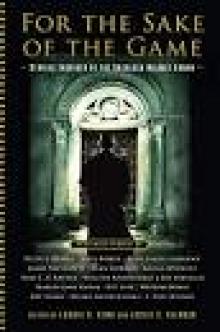 For the Sake of the Game
For the Sake of the Game A Darker Place
A Darker Place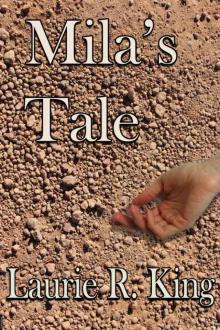 Mila's Tale
Mila's Tale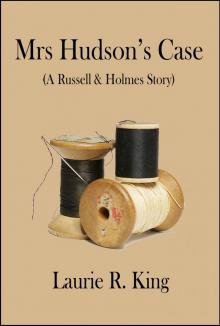 Mrs Hudson's Case
Mrs Hudson's Case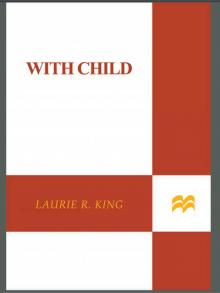 With Child
With Child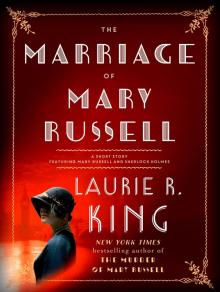 The Marriage of Mary Russell
The Marriage of Mary Russell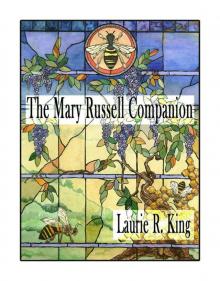 The Mary Russell Companion
The Mary Russell Companion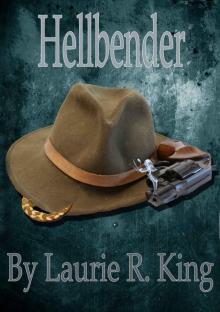 Hellbender
Hellbender Castle Shade
Castle Shade The Bones of Paris
The Bones of Paris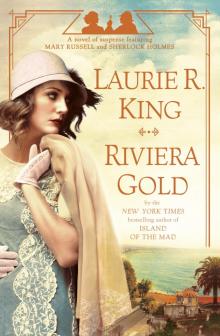 Riviera Gold
Riviera Gold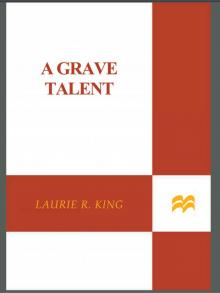 A Grave Talent
A Grave Talent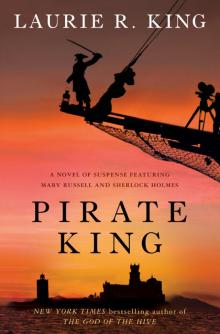 Pirate King
Pirate King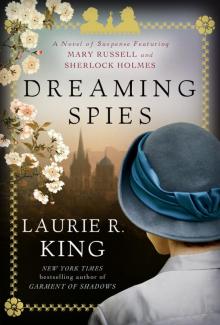 Dreaming Spies
Dreaming Spies Folly
Folly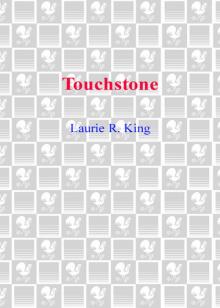 Touchstone
Touchstone The Game
The Game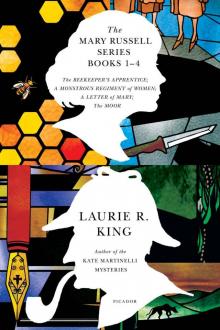 The Mary Russell Series Books 1-4: The Beekeeper's Apprentice; A Monstrous Regiment of Women; A Letter of Mary; The Moor
The Mary Russell Series Books 1-4: The Beekeeper's Apprentice; A Monstrous Regiment of Women; A Letter of Mary; The Moor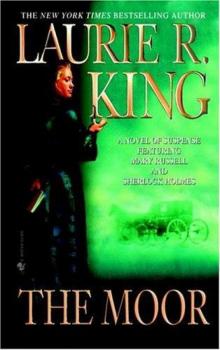 The Moor mr-4
The Moor mr-4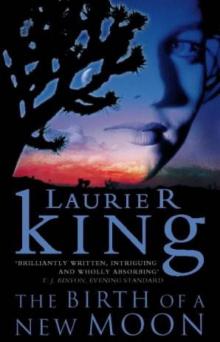 The Birth of a new moon
The Birth of a new moon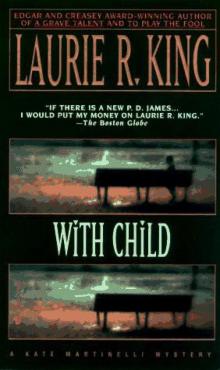 With Child km-3
With Child km-3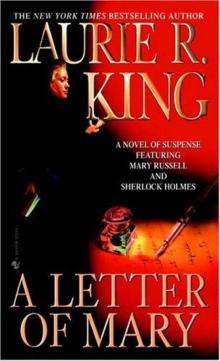 A Letter of Mary mr-3
A Letter of Mary mr-3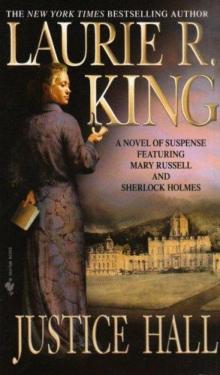 Justice Hall mr-6
Justice Hall mr-6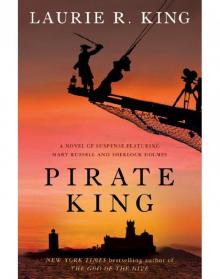 Pirate King: A novel of suspense featuring Mary Russell and Sherlock Holmes
Pirate King: A novel of suspense featuring Mary Russell and Sherlock Holmes Pirate King: A novel of suspense featuring Mary Russell and Sherlock Holmes mr-11
Pirate King: A novel of suspense featuring Mary Russell and Sherlock Holmes mr-11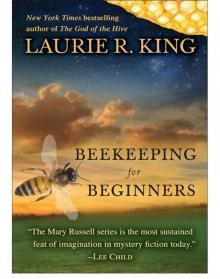 Beekeeping for Beginners (Short Story)
Beekeeping for Beginners (Short Story)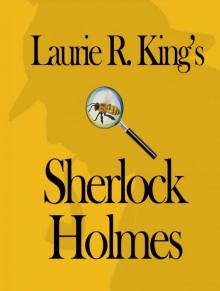 Laurie R. King's Sherlock Holmes
Laurie R. King's Sherlock Holmes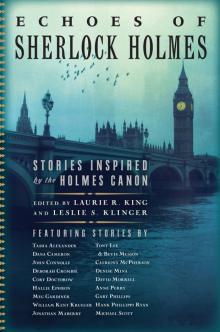 Echoes of Sherlock Holmes
Echoes of Sherlock Holmes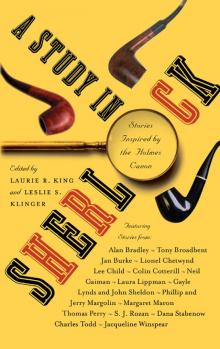 A Study in Sherlock
A Study in Sherlock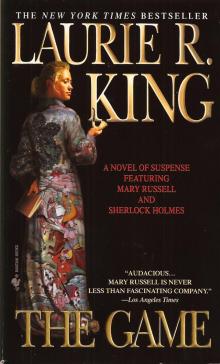 The Game mr-7
The Game mr-7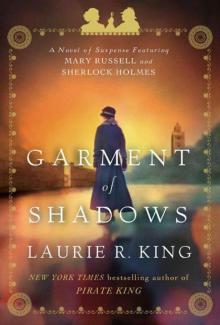 Garment of Shadows: A Novel of Suspense Featuring Mary Russell and Sherlock Holmes
Garment of Shadows: A Novel of Suspense Featuring Mary Russell and Sherlock Holmes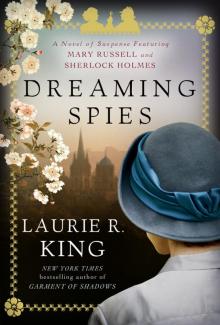 Dreaming Spies: A novel of suspense featuring Mary Russell and Sherlock Holmes
Dreaming Spies: A novel of suspense featuring Mary Russell and Sherlock Holmes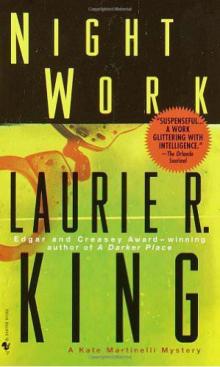 Night Work km-4
Night Work km-4 Mary Russell's War
Mary Russell's War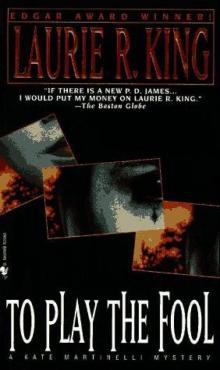 To Play the Fool km-2
To Play the Fool km-2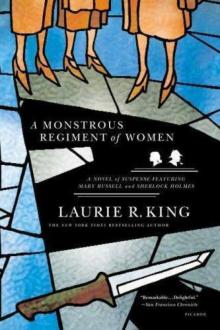 A Monstrous Regiment of Women mr-2
A Monstrous Regiment of Women mr-2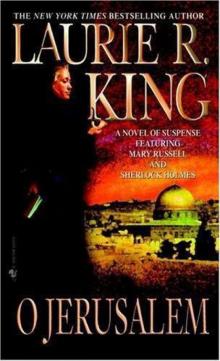 O Jerusalem mr-5
O Jerusalem mr-5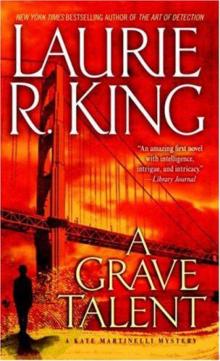 A Grave Talent km-1
A Grave Talent km-1